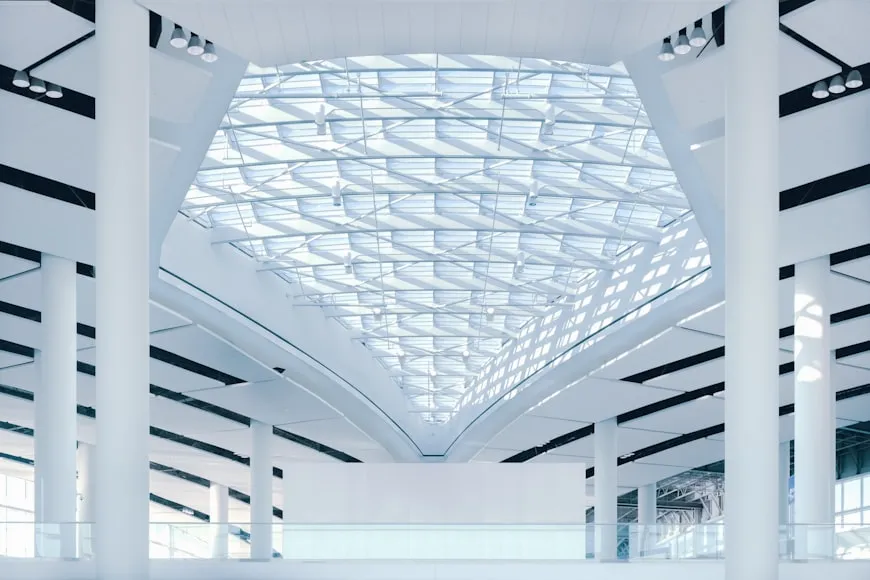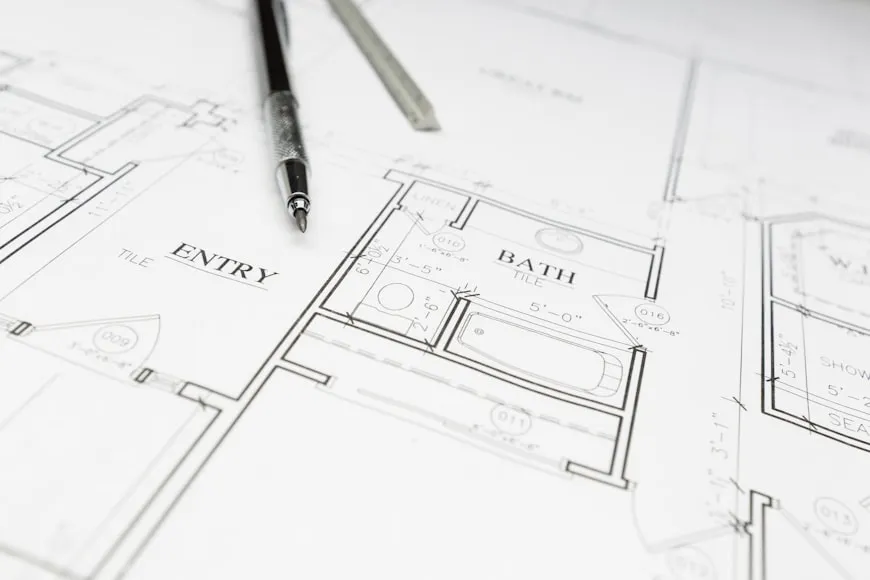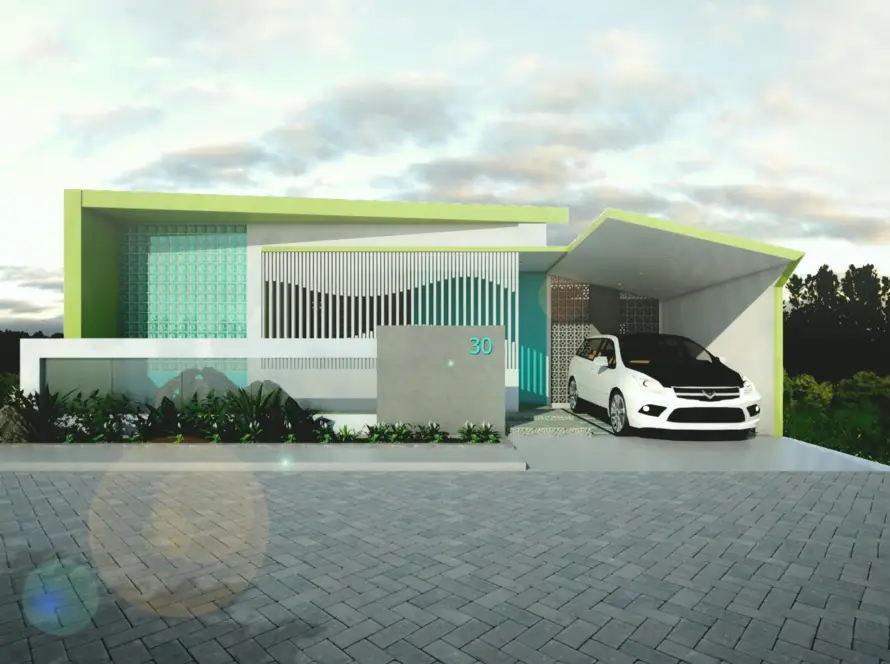
Image by Parrish Freeman on Unsplash
Table of Contents
Introduction
Have you ever walked into a building and felt immediately at ease, or stared at a structure and wondered what makes it so striking? That’s the magic of architectural principles at work. These foundational rules guide how spaces are designed to be functional, beautiful, and enduring.
If you are just starting out, maybe as a student, a hobbyist, or someone curious about the built world around you, this guide breaks it down simply. We will cover the basics of principles of architecture, why they matter, and how they apply in real life.
RELATED BLOGPOST
Understanding Architectural Principles
Architectural principles are not some abstract theory; they are practical tools that have shaped everything from ancient temples to modern skyscrapers. Drawing from historical figures like Vitruvius, who emphasized firmness, utility, and beauty back in Roman times, these ideas help create spaces that stand the test of time.
Today, with over 58% of the world’s population living in urban areas (according to UN data), understanding these principles is key to building sustainable and livable environments.
Read up on our BlogPost Architectural Designs: A Beginner’s Guide to Building Design for more understanding.
As for professional help, if you are in Nigeria and looking for expert architectural services, check out Imprexi’s Architectural Services and their portfolio, we bring these principles to life in real projects.
Why Architectural Principles Matter
1. Foundation of Design: Architectural principles form the backbone of any good design. They ensure that buildings are not just structures but spaces that enhance how we live, work, and interact.
2. Historical Roots: These ideas trace back thousands of years. The ancient Greeks used symmetry in temples like the Parthenon to create a sense of order and grandeur.
3. Modern Relevance: Fast forward to today, and architects like Frank Lloyd Wright applied “form follows function” to blend buildings with nature. In a world where construction contributes to 32% of global carbon emissions, these principles promote sustainability.
4. Benefits for Beginners: Grasping these basics builds confidence. You start noticing why some designs work and others do not.
5. Common Pitfalls: Ignoring scale can make rooms feel off, or skipping rhythm might lead to visual chaos, but we will cover fixes ahead.

Image by Getty Images on Unsplash
Core Architectural Principles Explained
Now, onto the heart of it. We will break down key architectural design principles one by one. Most sources agree on 7-10 essentials, but we will focus on the most impactful for beginners. Each includes examples and tips to try yourself.
Balance: Creating Visual Stability
Balance is about distributing visual weight so a design feels stable. There are two main types: symmetrical (mirrored elements) and asymmetrical (uneven but still equilibrated).
Take the Taj Mahal, its perfect symmetry draws the eye and evokes calm. In contrast, asymmetrical balance in Gaudí’s Sagrada Familia uses varying shapes for dynamic appeal.
Tip for beginners: Sketch a simple room. Add furniture symmetrically first, then experiment with asymmetry. Notice how it changes the feel? Aim for balance to avoid a lopsided look.
Proportion and Scale: Harmony in Size
Proportion refers to how elements relate in size, while scale ties them to human dimensions. The Golden Ratio (1:1.618) often appears here, seen in the Pyramids of Giza for pleasing aesthetics.
Why care? Poor proportion can make a space feel overwhelming or tiny. Leonardo da Vinci’s Vitruvian Man illustrates ideal human-scale proportions.
Beginner exercise: Measure your living room. Is the furniture scaled right? Adjust mentally and see the difference.
Rhythm and Movement: Guiding the Eye
Rhythm creates flow through repetition, like columns in a colonnade or windows in a facade. It guides movement, making spaces intuitive to navigate.
The Sydney Opera House uses curved shells for rhythmic flow, drawing visitors in. Without it, designs feel static.
How to apply: In your next walk, spot repeating patterns in buildings. Try drawing a staircase with rhythmic steps.
Emphasis and Hierarchy: Highlighting Key Features
Emphasis draws attention to focal points, like a grand entrance. Hierarchy organizes elements by importance.
In the Eiffel Tower, the tip emphasizes height. This principle ensures users know where to focus.
Practical step: In a design app, bold one element. Does it stand out without being overwhelming?
Unity and Harmony: Tying It All Together
Unity ensures all parts work as a whole, creating harmony. Materials, colours, and shapes should complement each other.
Frank Gehry’s Guggenheim Museum Bilbao achieves unity through curving titanium panels.
Tip: Review a photo of your home. Do the elements unify, or clash?
Form and Function: Practical Beauty
Coined by Louis Sullivan, this means design should serve purpose first. Modern examples include minimalist homes where every feature has a role.
In sustainable designs, function includes energy efficiency, reducing costs by up to 20%.
Beginner idea: Redesign a kitchen tool for better function; apply to spaces.
Sustainability: The Modern Essential
Today’s principles of design in architecture include eco-friendliness. Use renewable materials and passive solar design to minimize impact.
The Bullitt Center in Seattle is a “living building” example.
Actionable: Research green materials for your next project.
These principles interconnect; balance often pairs with proportion for overall harmony. Practice by analyzing local buildings.

Image by Etienne Girardet on Unsplash
Real-World Applications and Modern Trends
Seeing architecture principles in action makes them stick. Iconic spots like the Colosseum use hierarchy for crowd flow.
In everyday life, apply them to home renovations, balance lighting for comfort. Stats show well-designed spaces boost productivity by 15%.
Modern trends? AI tools like generative design software test principles quickly. Sustainability reigns, with net-zero buildings on the rise.
Looking ahead, urban challenges like density call for adaptive principles. Think modular homes for flexibility.
Conclusion
Wrapping up, architectural principles are your toolkit for understanding and creating meaningful spaces. From balance to sustainability, they turn ideas into realities that improve lives.
Ready to put this into practice? Contact Imprexi for tailored architectural guidance. Contact us to start your project today.
Read more: 6 Top Home Renovation Companies in Nigeria for Quality Services
FAQ
1. What are the basic architectural principles for beginners?
The basics include balance, proportion, rhythm, emphasis, unity, form and function, and sustainability. Start with these to build a strong foundation in design.
2. How do architectural design principles differ from styles?
Principles are universal rules like harmony and scale, while styles (e.g., Gothic or Modern) are specific applications of those rules in historical or cultural contexts.
3. Can I learn architectural principles without formal education?
Absolutely! Use free online resources, books, and observation. Tools like sketches or apps help you experiment at home.





1 Comment